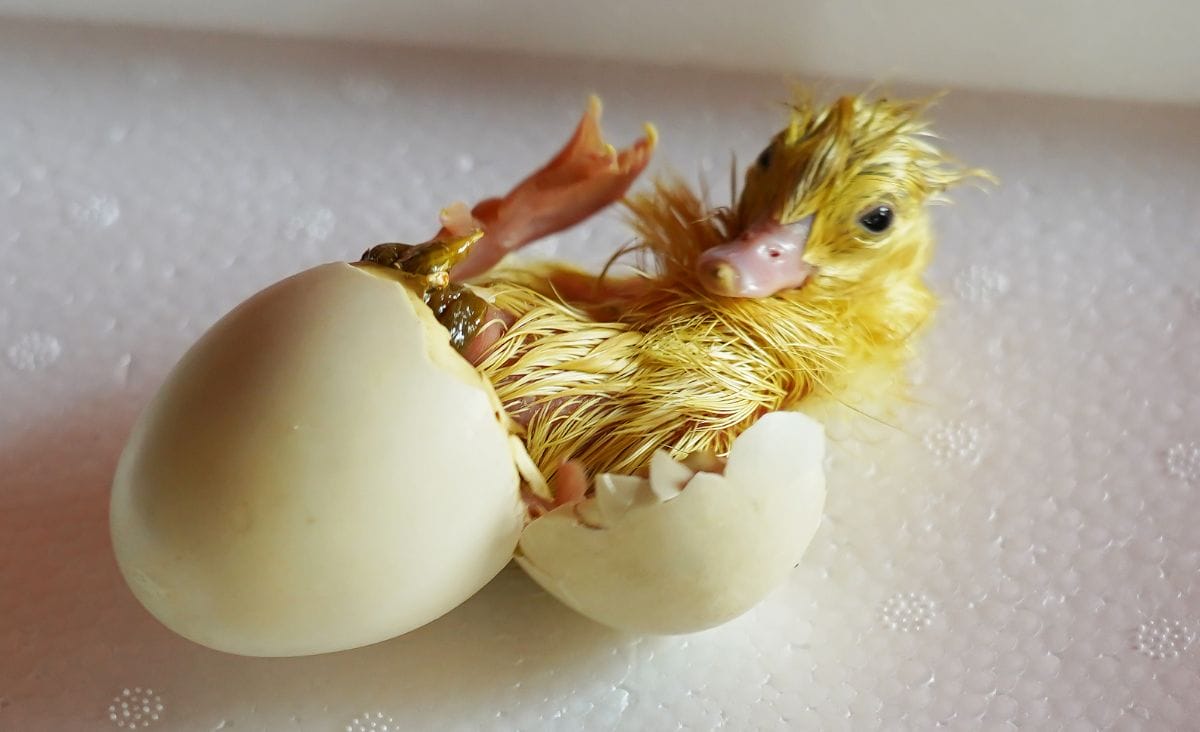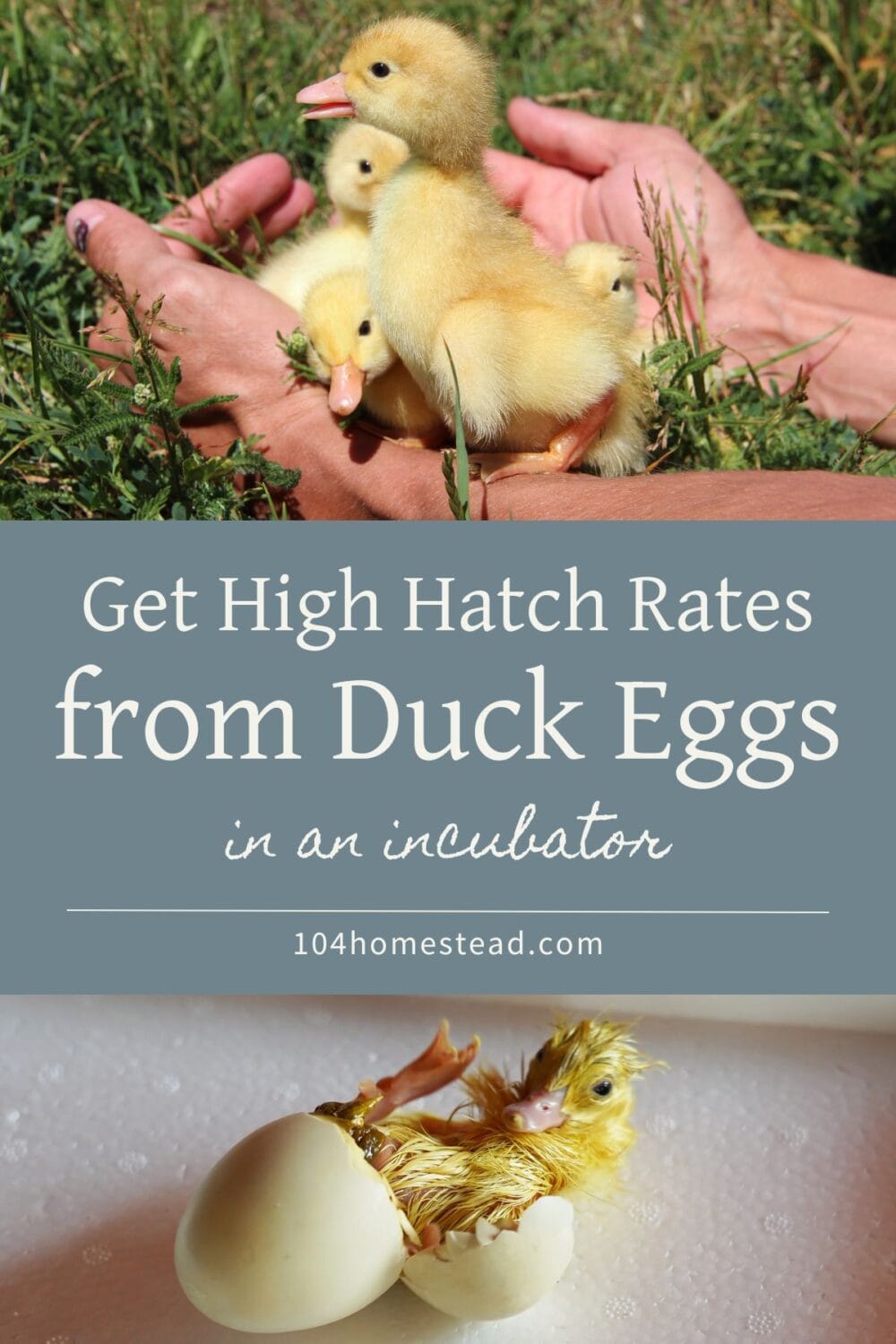How to Achieve High Hatch Rates with Duck Eggs in Your Incubator
Find out what you need to know about temperature, humidity, and more in order to get a high hatch rate when you incubate duck eggs.

If done right, hatching duck eggs can be fun and result in a flock of healthy ducklings. But the process can be tricky, and exact conditions are needed to get a good hatch rate. This post will help you understand the incubation process, improve the number of eggs that hatch, and bring new ducklings into your homestead.
Ducks are great additions to your backyard because they keep bugs away, lay eggs, and are generally fun to watch. Picking the right duck breeds for your homestead can make your experience with poultry better, whether you want specific egg-laying traits, personality traits, or looks. For your backyard ecosystem to stay in balance as you add these new ducklings to your flock, you should also think about how different bird species interact with each other.
How long do duck eggs take to hatch?
Duck eggs typically take about 28 days to hatch under optimal incubation conditions. This is longer than some of their poultry counterparts. Quail, for example, take 18 days on average, and chickens take approximately 21 days to hatch.
Muscovy duck eggs are an exception to the general duck hatch timeline, requiring a bit more patience with a longer incubation period of approximately 35 days.
Optimal Hatching Conditions
Creating the best conditions for hatching is very important for successfully incubating duck eggs. Let’s talk about the important factors, like temperature, humidity, and how to handle eggs so that you can get the highest hatch rates.
Temperature and Humidity
The incubation process requires maintaining a temperature between 99.3-99.6ºF for the full 28 days. Humidity levels should start at 55% and adjust to 65% on day 25, reaching 80% by hatch day to facilitate the hatching process.
Turning the Eggs
Regularly turning the eggs is crucial, especially during the first week. Turn the eggs an odd number of times daily, ideally 5-7 times, to ensure that each side is alternately faced up during the longest period they remain unturned overnight.
Automatic egg turners are a game-changer in the incubation process, removing the need for manual turning and ensuring that eggs are rotated evenly and consistently. In addition to saving time and effort, this automated system also greatly lowers the chance of contamination from handling, which results in higher hatch rates and healthier embryos.
Candling to Check Development
When candling eggs, you shine a light through the eggs to see if they are fertile and growing. Candling is more important with duck eggs than it is with poultry with a shorter incubation period, such as quail. Infertile eggs or eggs that have quit have a higher chance of exploding in the incubator due to the longer incubation time.
Perform candling around day 5 to check for veining and slight development, and again at day 10 to observe the expansion of the air sac.
Cooling and Misting
This is the step that really sets hatching duck eggs and other poultry eggs apart, and it really has an impact on hatch rates.
Starting on day 10, cool the eggs for 30 minutes and spray them with room temperature water. This mimics the natural process where a mother duck leaves the nest, cooling the eggs slightly. Ensure the eggs do not drop below 86ºF during cooling.
Incubators that have a setting for cooling make this a simple step to achieve. I use the Brinsea Octagon Advance, but those are hard to come by since Brinsea updated their incubator lineup. Thankfully, their Ovation series offers cooling in the Advanced and EX models. You may need to buy specific trays suitable for larger duck eggs, which is a drawback of the Ovations. If you can get your hands on a used Octagon, I highly recommend it.
Lockdown Procedure for Duck Eggs
As your duck eggs approach the crucial final days before hatching, entering the “lockdown period” is an important part. At this stage, you need to make certain changes to the incubator’s settings to make sure the ducklings have the best chance of breaking through their shells.
Stop Turning and Cooling
By day 25, all turning and cooling activities should stop. This allows the developing embryos to position themselves correctly for hatching. Turning eggs after this point can disorient the ducklings and potentially hinder their ability to hatch.
Increase Humidity
Elevating the humidity to 80% mimics the natural increase in moisture levels that would occur in a nest. This higher humidity helps soften the shell, making it easier for ducklings to break through.
Avoid Opening the Incubator
Refrain from opening the incubator so that the high humidity and stable temperature stay in place. Changes in the environment can put stress on the ducklings and make it harder for them to hatch.
Additional Considerations
- Ventilation: Make sure the ventilation system in the incubator is working well. Even during lockdown, the right flow of air is needed to bring in fresh oxygen and get rid of carbon dioxide.
- Temperature Changes: Keep a close eye on the temperature of the incubator. A small drop in temperature to about 98°F over the last two days can help simulate the natural cooling that happens as the mother duck gets ready for the eggs to hatch.
- Getting Ready to Hatch: Get the incubator and the area around it ready for the ducklings to come. You should have a brooding area ready for them to go to when they are dry and active.
Carefully following these steps and getting ready for the important lockdown phase will help you make the best conditions in your incubator so that your duck eggs have the best chance of growing into healthy, happy ducklings.
Frequently Asked Duck Hatching Questions
If you’ve found value in this blog post and enjoyed reading it, why not share it with your Pinterest community? Pin the image below and spread the love!

It can be satisfying to watch duck eggs hatch in an incubator. It takes careful planning, patience, and a little magic from nature. You will be able to welcome a new flock of ducklings into the world as long as you follow the rules about temperature, humidity, and handling the eggs. Don’t forget that it is not just the process that matters, but also the amazing journey of learning and growing along the way.
Have you ever hatched duck eggs in an incubator? Share your experiences, tips, or any unique challenges you faced during the process.
